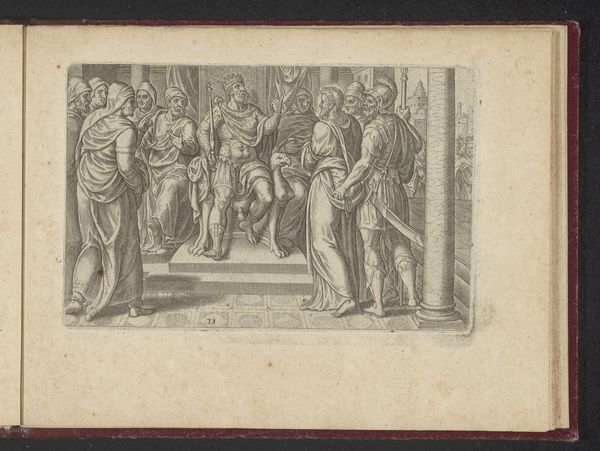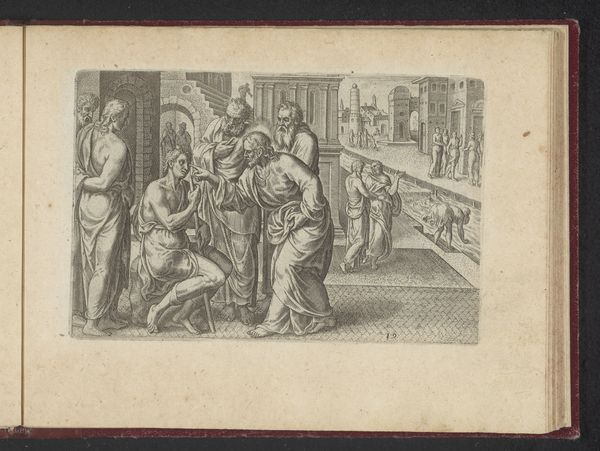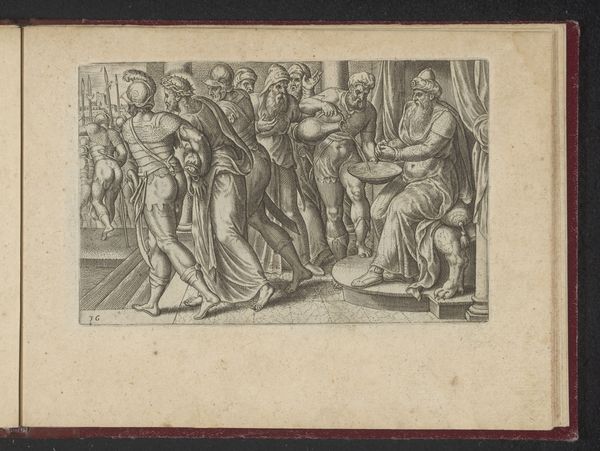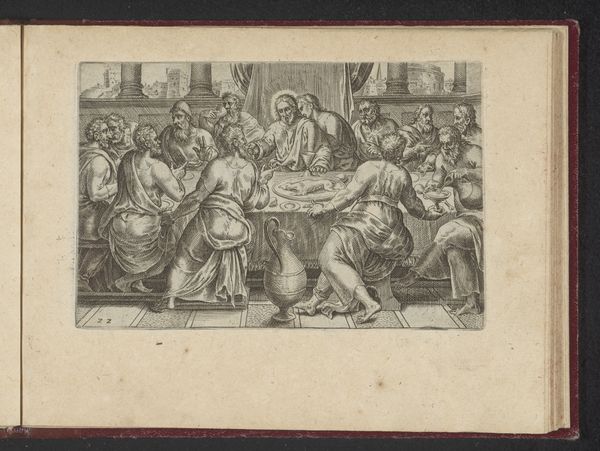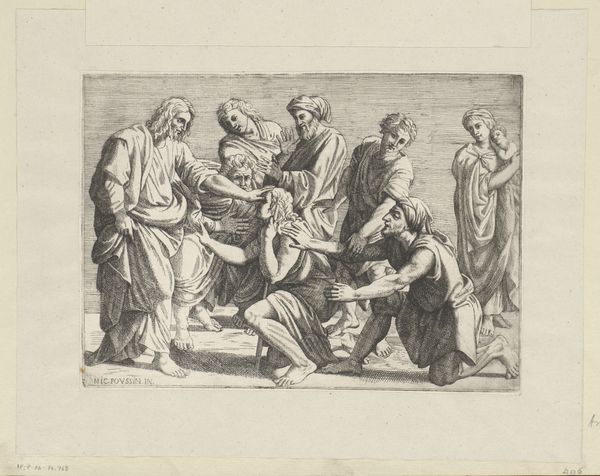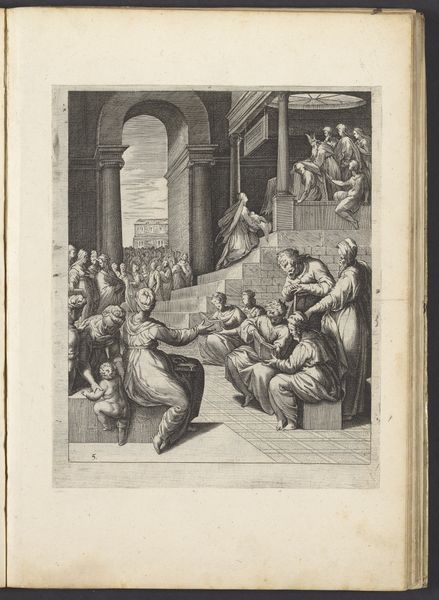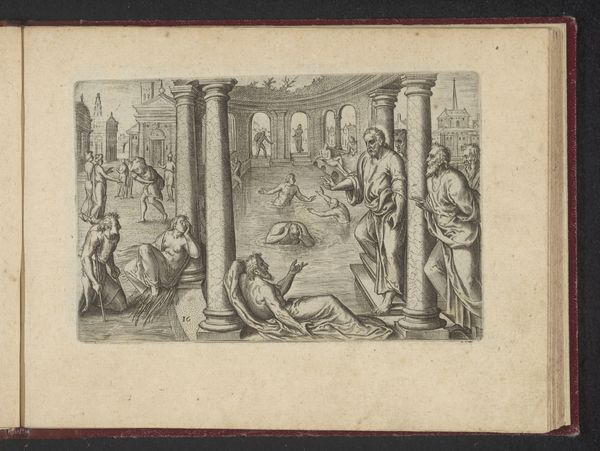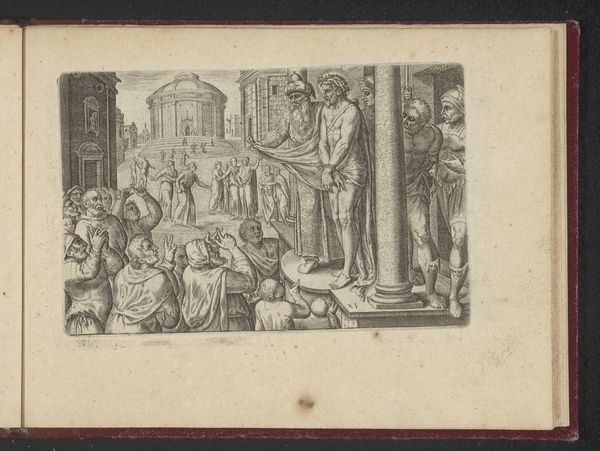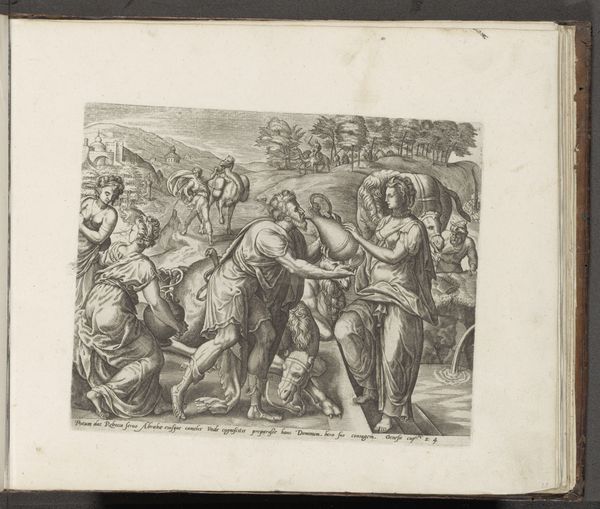
drawing, print, ink, engraving
#
drawing
# print
#
figuration
#
ink
#
history-painting
#
northern-renaissance
#
engraving
Dimensions: height 92 mm, width 139 mm, height 137 mm, width 183 mm
Copyright: Rijks Museum: Open Domain
Editor: Here we have Philips Galle's "Crowning with Thorns," created in 1573, an engraving in ink. It’s such a stark scene; what strikes me is the almost casual violence inflicted. What can you tell us about it? Curator: It’s a powerful illustration, yes. Considering its context, this engraving speaks volumes about the mass production and distribution of religious imagery during the Northern Renaissance. Look at the crispness of the lines, achieved through skilled labor. Engravings like this were not simply devotional aids, they were commodities produced for a burgeoning market, making religious narratives accessible but also subject to the demands of production and consumption. Editor: So, the artistic skill becomes almost industrial? Curator: Precisely. The engraving process itself—the labor of the artist, the cost of materials, the distribution networks—all become central to understanding the work. Consider the choice of ink, its availability, its cost; how that affects the image. Think of the paper, its source, and what that implies about trade. This wasn't just about art; it was about a whole network of production and circulation. Does seeing it that way shift your perception? Editor: It does! It moves it away from pure religious sentiment. Curator: Right. By focusing on the materials and production process, we see beyond the immediate religious subject and engage with the economic and social realities that shaped its creation. We're acknowledging the human labor behind it, the printers, the distributors, all essential to understanding its meaning. Editor: I’ve learned so much, thinking about the means of making really changes the message. Thanks for the insight! Curator: Indeed. It prompts us to question traditional artistic hierarchies. By focusing on material and method, this piece can be seen as an everyday creation made for wide consumption.
Comments
No comments
Be the first to comment and join the conversation on the ultimate creative platform.
